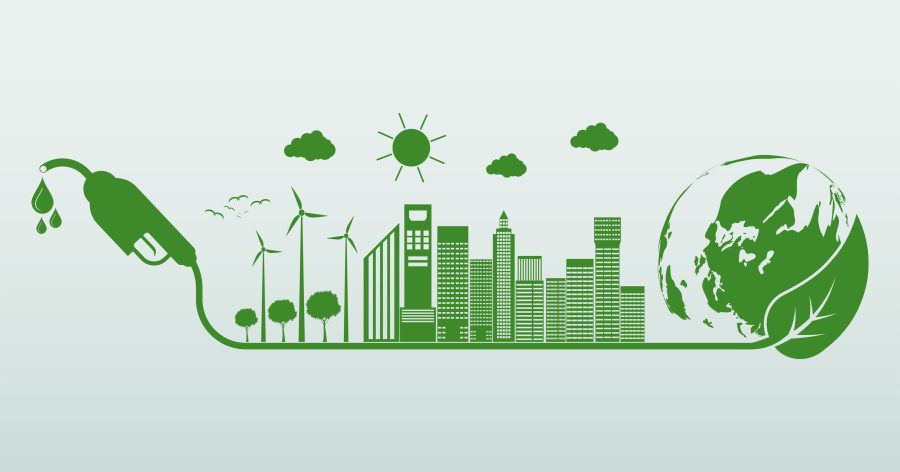How Can We Better Ensure Public Support for Government Climate Policies?

Research Director for climate economics at Norway’s leading institute for climate research, the CICERO Center for International Climate Research, discusses how our design of public policy must rapidly evolve.
Steffen Kallbekken
While citizens of the world are making it increasingly clear they want their governments to reduce global emissions, it’s less obvious what concessions they will allow to enable politicians to act.
Public opposition to effective climate policies is a key barrier to the introduction of effective policies, and can be as pernicious as the efforts by corporate lobbyists to oppose climate policies that would hurt them financially.
Taxes in particular often prove difficult to implement because of opposition, and the policies that are popular – such as subsidies and information – are often less effective.
Research over the past 10-15 years has provided plentiful insights on what factors determine how acceptable a policy is, such as the perceived perception of fairness.
Designing taxes for public support
Carbon taxes, fuel taxes, congestion charges and all their siblings often combine the unique qualities of being very cost effective while also very unpopular.
In large part, taxes tend to be unpopular because the costs are highly visible and because they are seen as restricting your freedom of choice – by making things more expensive. Therein also lies some of the answers to how taxes can be designed in more acceptable ways.
Environmental taxes generate revenues for the government. One of the key benefits of taxation as a policy instrument is it helps raise money for funding health care, education, defence or whatever else society prioritises.
Alternatively, the tax revenues can be used to lower other taxes, such as income taxes.
One of the clearest findings from research on how to boost public support is to earmark tax revenues for return to the public.
While spending revenues on public services or reducing other taxes might be the most logical use of money, the general public prefers the notion of a dividend: an equal amount per person that is their return on investment. This idea is commonly referred to as ‘tax-and-dividend’.
The public is at least as eager on the idea of earmarking money for environment projects.
Taxes that encourage better environmental behaviour, such as raising duty on fuel, find a more welcome audience, when accompanied with alternatives. For example, a fuel tax on its own may be unpopular, but combined with subsidies for public transport, it can be much more popular.
Public support for subsidies
Subsidies for initiatives such as electric vehicle adoption, improved home insulation, renewable energy and similar tend to be popular with the public.
One reason for this is that the costs are not all that visible, but when the funding source is made explicit, it has a clear impact on public support.
People tend to agree that subsidies should be funded through higher taxes on the wealthiest or through a carbon tax, but are less likely to support subsidies funded through reductions in social spending or increases in sales taxes, for example.
Public support is rarely a barrier for the introduction of subsidies, and their relative popularity can be usefully employed when designing policy packages that combine restrictive instruments such as taxes or regulation (e.g., standards and bans) with less restrictive instruments such as subsidies and information programs.
Policy packages
Climate change is a complex multi-faceted problem. Solving it will require a comprehensive set of policies to provide incentives for consumers to purchase zero emissions cars or heating systems, for companies to invest in net zero technologies, and for homeowners to invest in energy efficiency that benefits their tenants.
The policies used to achieve this will produce both intended and unintended consequences, including distributional impacts and resource demands in terms of power, raw materials and land use. This complexity points strongly towards the usefulness of deliberate policy packaging.
We still have limited insights on public support for policy packages. We do have some general insights, for example, on the usefulness of combining restrictive primary policies with ancillary policies that offset negative impacts of the primary policies, but we know far less about support for detailed designs adapted to a specific national or local setting.
Similarly, we know at a general level some things about how to combine instruments to create an effective package, but much less at a detailed and context rich level.
Leveraging research for policy action
To make effective use of the research effort on public support for creating more popular and effective policies, we need to improve the channels of communication between policy makers and researchers: Policy makers need to engage directly with the research, ensuring the insights that have already been accumulated through a large effort can be put to best use, like the OECD has done.
The researchers need to ensure their efforts are as focused and policy relevant as possible, e.g., by focusing on more detailed designs rather than theoretically ideal policies. There are also more practical steps that can be taken, including to involve the researchers in public hearings, and in the writing of government white papers.
